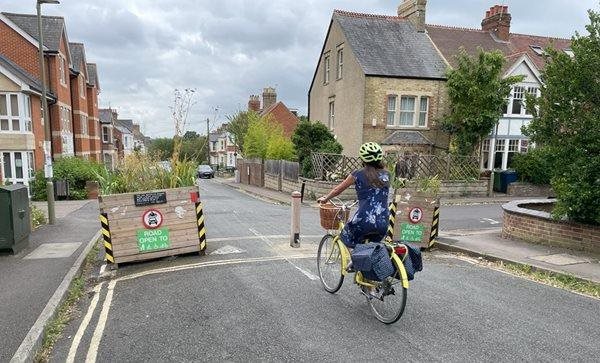Beyond the Bollards: Real Stories from Oxford's Low Traffic Neighbourhoods

Oxford, a city celebrated for its vibrant cycling culture and historic charm, has recently found itself at the heart of a significant discussion surrounding Low Traffic Neighbourhoods (LTNs).
These initiatives, designed to reduce through-traffic in residential areas, have sparked considerable debate, sparking all sorts of views on city life, how easy it is to get around, and what the future of transport looks like. The different experiences and strong feelings of people living there really show that there's a lively discussion happening about the best way to shape the city's streets for everyone.
Novel Research Project
Right in the middle of all this buzz, a key research project got started. It wanted to dig into what LTNs actually mean for the people living in Oxford. Backed by the Rees Jeffreys Road Fund, the project, officially called "Understanding Mobility and Activity in the Low Traffic Neighbourhood," aimed to look past the news headlines and dive deep into the everyday experiences of those affected by these changes. The main goal was to figure out how residents feel about LTNs and how these schemes have changed how they get around and what they do day-to-day.
Uncovering Perspectives: The Research Methods
To get a full picture, the researchers used a solid, multi-pronged approach:- Social Survey: They ran a big survey, gathering valuable info from 528 households both inside and near the East Oxford LTN.
- Household Interviews: They also did in-depth, one-on-one interviews with 30 residents, getting rich personal insights into their experiences and feelings.
- Mobile ‘Go-Along’ Interviews: In a unique move, researchers actually went along with 15 participants on their regular trips. This let them see firsthand and talk about how the LTN was affecting things right there and then.
Perceptions and Experiences: Key Findings
The research painted a detailed picture of East Oxford, showing a whole range of opinions on the LTN scheme:- The Advocates: Many residents inside LTN areas reported big improvements: less car traffic, noise, and pollution, making streets safer and nicer for walking and cycling. Families with young kids especially loved the safer play areas, and some local businesses saw more people walking by.
- The Critics: Not everyone agreed. People on boundary roads often worried about more traffic and pollution being pushed onto their streets. There were strong feelings that LTNs unfairly impacted older and disabled people, as well as essential services like deliveries and emergency vehicles. Some also doubted the claimed social benefits inside the LTN.
- The Contemplative: A third group held a more balanced, yet complicated, view. They saw better conditions for walking and cycling within the LTN but felt it was unfair that boundary residents faced more issues. They pushed for bigger, fairer transport solutions for everyone, and questioned if "active travel" was truly practical for all.
Looking Forward: Conclusions and Broader Implications
The research suggests that while LTNs can be good at cutting down local traffic and encouraging walking and cycling in certain spots, they're not a magic fix for everything. The study really highlights the strong need for a more all-around approach to city transport. This means tackling bigger system-wide issues and keeping in mind the different needs and situations of all residents. The East Oxford LTN is a great example showing that there's no 'one-size-fits-all' solution. For these schemes to work well, they need careful planning, real involvement from the community, and a clear grasp of how they might affect areas beyond the immediate changes.
The compelling findings of this research were presented at the Annual Transport Practitioners’ Meeting, held at Manchester Metropolitan University, UK, from July 9-10, 2025, and at the AESOP Annual Congress in Istanbul, Turkey, from July 7-11, 2025.
Find out more about the perceptions and lived experience of the East Oxford Low Traffic Neighbourhood in the full published report.
